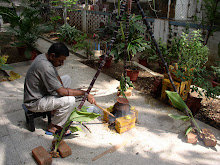Senator Feinstein Introduces Duty-Free Apparel Bill for Bangladesh, Cambodia, and Sri Lanka
Posted: 28th May 2009
Senator Diane Feinstein [D-CA] and Kit Bond [R-MO] have introduced a bill [S. 1141], called the
Tariff Relief Assistance for Developing Economies Act of 2009 or the "TRADE Act of 2009" to give duty-free access to apparel assembled in Bangladesh, Cambodia, and Sri Lanka and eleven other countries.
1) Afghanistan.
2) Bangladesh.
3) Bhutan.
4) Cambodia.
5) Kiribati.
6) Lao People's Democratic Republic.
7) Maldives.
8) Nepal.
9) Samoa.
10) Solomon Islands.
11) Timor-Leste (East Timor).
12) Tuvalu.
13) Vanuatu.
14) Yemen.
15) Sri Lanka
In order to get the benefit the apparel must conform to one of two rules regarding the fabric in the apparel:
1) Apparel assembled in beneficiary countries of U.S. fabric of U.S yarn in unlimited quantities.
2) Apparel assembled in beneficiary countries of fabric formed in beneficiary countries of yarn formed in the U.S. or beneficiary countries, and for the years 2009 through 2016 apparel assembled in beneficiary countries of third-country fabrics, subject to the following limits
In 2009 apparel in a quantity not exceeding 11.0% of all U.S. apparel imports
2010 = 11.3% of all U.S. apparel imports
2011 = 11.6% of all U.S. apparel imports
2012 = 11.9% of all U.S. apparel imports
2013 = 12.2% of all U.S. apparel imports
2014 = 12.5% of all U.S. apparel imports
2015 = 12.8% of all U.S. apparel imports
2016 = 13.1% of all U.S. apparel imports
2017 = 13.4% of all U.S. apparel imports
2018 = 13.7% of all U.S. apparel imports
2019 = 14.0% of all U.S. apparel imports
There is an attempt to make sure that the quota for third-country fabric is not all used by a few larger supplier countries.
ANALYSIS
Of the 14 beneficiary countries, five are major shippers of apparel to the U.S.
Bangladesh which shipped 1,436,252,000 square meter equivalents (sme) in
2008, followed by:
Cambodia (888,642,000 sme)
Sri Lanka (379,491,000 sme)
Laos (16,865,000 sme)
Nepal (4,836,000 sme)
Combined these five accounted for 12 percent of all U.S. apparel imports in 2008. The top three, Bangladesh, Cambodia, and Sri Lanka account for 99 percent of all apparel imports from the 14 countries.
The provision for apparel of U.S. fabric of U.S. yarn appears to make no allowance for non-U.S. findings and trimmings, interlinings, or items in short supply as do all the other textile trade preference programs. NTA does not believe that manufacturers will find a provision that is this restrictive to be of much use.
The provision for apparel of beneficiary and third-country fabrics appears to not allow coming in of U.S. and regional or third-country fabrics in the years 2017 through 2019. Therefore, for the first eight years U.S. fabric will be used only to the extent that it is competitive with fabric from China and other Asian sources, which seems unlikely given the the prices we have seen from those sources and their proximity to many of the beneficiary countries. Also note, that there is no incentive to use U.S. fabric under this provision, as U.S. fabric will count against the global cap on regional and third-country fabrics. Finally, U.S. fabric is not
permitted at all under this provision in years nine, ten, and eleven.
The bill as written would give duty-free access to a quantity of apparel assembled of beneficiary and third-country fabric at a level approximately equal to historic trade under general rates of duty. It is not likely to lead to increased use of U.S. inputs because the U.S. fabric provision is too restrictive to be attractive and would fail to earn a beneficiary country any additional beneficiary or third-country quota and (2) use of U.S. fabric under the beneficiary or third-country fabric provision effectively decreases their quota for beneficiary country and third-country fabric. Imports of apparel assembled in beneficiary countries of non-U.S. inputs are likely to increase somewhat as the tariff savings under the quota provisions will likely be averaged with the cost of non TRADE Act of 2009 imports. The amount of increased trade is difficult to estimate.
Although the bill attempts to spread the benefits among the 14 countries the allocation provision is very weak and the effect is likely to be growth of imports from the three countries that are already major shippers.
One country, Bangladesh, accounts for 52 percent of U.S. apparel imports from these countries, we can expect the majority of the growth to also come from that one country. Cambodia (33 percent of imports from the 14) and Sri Lanka (14 percent of imports) are the other two countries likely to benefit from the program.

No comments:
Post a Comment